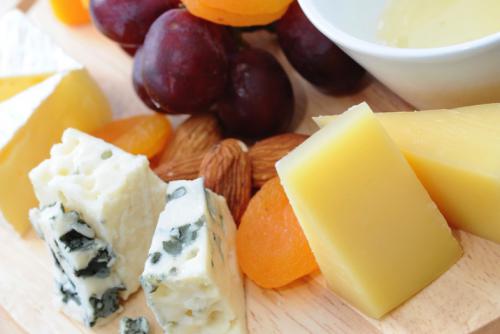Category: Cheese Facts
Dictionary Of Cheese
When it comes to forming your cheese plate, it is always advised to have a lot of variety. In terms of variety, it can mean many things- different flavors, textures and different milk types. In many circumstances, opposites attract, especially in cheese. Opposite flavors often complement each other. The best way to form your plate is just to experiment with different cheeses, you cannot go wrong.
You may be struggling to find inspiration for what cheeses to try for your plate so here is a dictionary list of some delicious cheeses to guide you along your way and ignite your senses like never before.

Adelegger
This cheese is made from raw cow’s milk and is originally produced in the Bavarian Alps. The flavor is nutty and savory with a hint of beef broth. This is definitely not and ordinary cheese and has a texture which is quite gritty.
Bijou
This goat’s milk cheese has a creamy texture. It comes from Vermont Creamery and has a strong tangy flavor. Bijou is often sold in pairs and is packed in certain packaging to ensure it keeps on aging even after leaving the creamery.
Clothbound Cheddar
Clothbound Cheddar is a crumbly cheese which dates back many years is definitely becoming more popular.With a sharp citrus flavor, there is no doubt that this cheese is a delicious winner.
Dorset
Rich in flavor, Dorset is a raw cow’s milk cheese which once produced, is washed in brine and aged until it is semi-firm.
Époisses
This cheese is extremely popular, being produced originally in Burgundy, France. This stinky delight is so creamy because it is washed in brandy. The meaty, salty flavors are really what makes this cheese unique.
Fontina Val d’Aosta
This creamy, buttery delight made from cow’s milk dates back to the middle ages and comes from the Italy Aosta Valley. Similar to many other Alpine kinds of cheese, it smells quite like grass even though its flavor is quite briny.
Grayson
If you’re a fan of breakfast foods like bacon and eggs, this is definitely the cheese for you. Grayson is a raw cow’s milk cheese which has meaty flavors and is made from a yellow paste similar to egg yolk. This cheese comes from Meadow Creek Dairy in Virginia.
Harbison
You won’t need a cheese knife for this one, more like a spoon. Wrapped in bark for a unique touch, this sweet cheese boasts delicious citrus and savory flavors. As for the texture, soft and creamy enough to spread, you won’t be disappointed.
Idiazabal
This cheese has an interesting background. A shepherd produced this cheese in a cabin in Spain a century ago. Made from sheep’s milk, the production method is like no other. Cheese wheels in the rafters would drink up smoke creating a rustic smokiness that will make your mouth water.
Juvindale
From New York’s Meadowood Farms, Juvindale is a smooth paste which is washed in local Riesling. Its flavors are very crème Fraiche like with tangy notes cutting through the meaty, fruity flavors. Juvindale is a fairly new cheese but tasty nonetheless.
Kunik
If you are looking for a rich, buttery cheese, Kunik is definitely the way to go. Made from goat’s and cow’s milk cream, enjoy this creamy cheese with salty notes.
Leonora
Originating from Spain, this gamy goat’s milk cheese has a dense texture to it. It is quite close and compact towards the center and a lot creamier towards the rind with flavors of pepper running through it.
Manchego
Another iconic Spanish cheese is Manchego. It is made from sheep’s milk and is a hard, aged cheese with flavors of toasted almond and roast mutton which will definitely keep you coming back for more!
Nuvola Di Pecora
The name of this cheese actually translates to “Sheep Cloud”, which will come no surprise to find that it is made from Sheep’s milk. It is an earthy, rich cheese with a spectacular neon-yellow color with gray mold. Not only is it deliciously rich, it is a rare style overall of cheese which is available in the U.S.
Ossau Iraty
Firm and buttery like a biscuit, this raw sheep’s milk cheese are from the Pyrenees of Southern France. The flavor is caramelized and nutty with subtle notes of tropical fruit and mint within the sweetness.
Parmigiano Reggiano
When it comes to cheese, why settle for anything less than a high quality, delicious, raw cow’s milk Parmigiano? The best way to make sure of quality is a reliable producer. For many generations, the Cravero family has crafted expert, high-quality wheels of grassy, nutty, mouth-watering cheese.
Quadrello Di Bufala
Leave behind your regular mozzarella and open up to the world of possibilities that comes along with Quadrello Di Bufala. Made from rich water buffalo milk, this cheese is brine-washed and tastes sweet and minerally.
Roquefort
One of the magnificent blue cheeses, Roquefort is rich with sheep’s milk, being produced in France it lays a silken foundation for pockets of mold full of spicy, fruity flavors.
Selles-Sur-Cher
From the Loire Valley, this goat’s milk cheese has ashed rind and a dense paste which is ripe with hazelnut and almond flavors. With intense mineral flavors, it may remind you of pennies or rocks you may have ‘accidentally’ tasted as a child.
Truffle Tremor
This is one of the finest truffle cheeses you can find. Made in Cypress Grove Chevre, the Italian black truffles are folded into a fluffy goat’s milk paste of Truffle Tremor. It is very mushroom like with earthy and tangy notes.
Up In Smoke
From Oregon’s River’s Edge Chevre lies the very foundation of a fresh goat’s cheese which is smoked and spritzed in Bourbon, maple leaves and then smoked completely. The result of this comes to a chevre whose intense smokiness is accompanied by tangy, lemony notes.
Valencay
With a unique pyramid shape which has seemingly lost its top comes an ashed goat’s milk cheese which is from the Loire Valley. It is very moist with and earthy freshness to it. It’s similar to the smell of your hands when you’ve been gardening all day.
Wilde Weide Gouda
Coming from a Dutch farmhouse, this flaky Gouda certainly exceeds expectations with its buttery and nutty, whiskey caramel flavors. The name of this cheese itself translates to “wild meadow” which makes sense because of the cows that graze all day in the meadows to provide the organic milk for this particular cheese.
X Murray’s Project X
With a collaboration between Vermont’s Spring Brook Farm and Manhattan mega-monger, Murray’s Cheese is quite a firm raw cow’s milk tomme which is crusted in fennel pollen and washed in Riesling.
Yarg
Yarg is a crumbly cheese made from cow’s milk. It is wrapped in nettle leaves from Lynher Dairies in West Cornwall, England. Lacy mold then develops on the leaves while the cheese ages, which in turn gives a mushroomy quality along with the citrusy notes of this firm cheese.
Zimbro
Zimbro is a signature cheese of Portugal. It is quite like pudding and is made from sheep’s milk. The cheese is quite sour and can most definitely be eaten with a spoon. Along with its unique name, it is also quite rustic and elegant. The aroma is very herbal and the flavors resemble Amaro. It is best to eat this cheese as a group as it is only sold as a whole.
Luscious Truffles
What is more delicious than truffles? Goat’s cheese truffles! Although it is a unique idea, cheese truffles are a match made in heaven! The possibilities with cheese are endless because of all the unique varieties and flavors available on today’s market, it’s best to keep trying out new things and say yes to Goat’s cheese truffles!
A lot of the time, especially when it comes to putting food together, opposites attract. Originally, when you took that first bite of a cheese truffle, it was like an explosion in your mouth. The acid of the goat’s cheese almosts fought with the truffle. This wasn’t the best outcome, so cheese pioneers kept experimenting. That is the fun thing about cheese, you can keep trying out new things until you perfect it.
Cheese makers found that inoculating the truffles and putting them in an aging room to ripen was the best step forward… and they were right. As the cheese truffles aged, the creamy texture of the ripened cheese combined with the earthy flavors of the truffles proved to be a perfect pairing.
These truffles are so good that they have actually won world cheese awards from the American Cheese Society.
The best thing about cheese truffles is the texture really goes well with the flavor which really wins someone over despite the expensive costs of production. When it comes to great, unique food, people can usually overlook the price (within reason!)
These tremendous truffles will definitely be a statement piece at dinner parties and on cheese boards. They will be the deliciously you’ve been missing!
Here is a delicious recipe to create your truffles:

What You Need:
9 oz fresh goat cheese
6 Tbsp finely chopped fresh chives
6 Tbsp finely chopped pistachios
1-1/2 tbsp finely crushed pink peppercorns mixed with 1-1/2 tbsp finely chopped parsley
What To Do:
1. To portion goat cheese, divided goat cheese into 2 pieces and, with damp hands, roll into 2 logs. Cut each log into 18 pieces and shape goat cheese into balls.
2. Arrange chives, pistachios and pink peppercorn/parsley mixture each into 3 small bowls. Roll goat cheese “truffles” into the choice of coatings and place on a baking tray or plate. Chill until ready to serve.
Source
All About Cheese Textures
Silky, firm, soft and crumbly- just a few of the delicious textures available in our favorite, mouth-watering cheeses. It may not seem it, but the texture is detrimental to the way cheese is classified and marketed to be sold.

The texture of cheese really all depends on how they were made. They could be creamy, grainy or plain hard. Generally, the texture is dependent on the age of the cheese and how much moisture it contains. The more moisture content, the softer the cheese is, while harder variations may be a lot older and subjected to heat to make them drier. To get a better idea, let’s explore the various cheese textures and how they are created and classified.
Ripened Or Fresh?
Although there are many variations, cheese can be generally broken down into two broad types: ripened and fresh. With ripened cheeses, curds are drained by many different ways such as soaking, cooking or bacteria inoculation. The ripened cheeses are then stored according to a specific recipe after they are cured. While using various humidity and temperature controlled environments, cheese makers can formulate a variety of textures.
For fresh cheeses, they are ready to be eaten soon after the whey is drained from the curds. Although they may be molded or pressed into different, they are still soft and spreadable in texture. Popular fresh cheeses are Ricotta, Mascarpone, and Cream Cheese.
Soft-Ripened
These cheeses are surface-ripened and are neither cooked or pressed. Instead, bacteria processes are used to ripen from the outside in. They develop golden colored rinds and can range from creamy to semi-soft. Favorites include Camembert and Brie.
Semi-Soft
Semi-soft is soft but still sliceable. They can even be pressed and might be cooked. Cheeses which are in this category are Gouda, Monterey Jack, and Tilsit.
Semi-Firm
Semi-firm cheeses are cooked and pressed but not aged as much as fully hard cheeses. Although they are generally firm, they are not crumbly. Popular semi-firm cheeses are Swiss, Cheddar and Edam.
Hard
These cheeses are typically aged for 2 years and they are cooked and pressed. Hard cheeses are also very firm and dry. Popular hard cheeses include Asiago, Parmesan, and Pecorino.
Special Process
With special cheeses with unique texture qualities, comes special cheese making processes. An example would be when blue cheese is made, it is either inoculated, punctured or sprayed with spores of molds like Penicillium Roquefort during the aging period. After this, the cheese develops the famous pockets of blue-green mold, forming the creamy, gritty texture. Another part of the special process is called “pasta filata”. Putting a curd in a hot whey bath and kneading and stretching it until it is pliable creates a thing called “spun paste” cheeses.
Storing Cheeses Based On Their Textures
To fully experience and enjoy the distinctive textures of your favorite cheeses, it is best to store them based on their type. Here is a simple guide on how to store your cheese based on their texture.
Semi-Soft, Semi-Firm And Firm
The best way to store cheeses like Cheddar, Gouda, and Parmesan, they should be wrapped in airtight plastic bags and placed in a refrigerator compartment or the location which is warmest in the refrigerator. Many varieties will be good for many weeks. If you want to store the cheese for more time, you can lightly dampen a paper towel with vinegar and then fold it around the cheese before wrapping and refrigerating. It will also make it less likely that mold will be able to grow, but if it does indeed happen, you can simply cut away the molded portion and discard it. Cutting away mold is only good for semi-soft, semi-firm, and firm cheeses, it is dangerous to consume molded fresh or soft ripened cheeses.
Soft-Ripened
If you are wanting to ripen cheeses like Camembert and Brie, wrap them tightly and store them at a cool room temperature for around a day. When the cheese is ripe, store it in the coldest part of the refrigerator for two weeks at the most. If mold appears on soft-ripened cheese, it is an indication that it is no longer good or safe to consume.
Fresh
Fresh cheeses like Cream Cheese and Ricotta perish quickly. It is ideal to purchase them at food markets with a good turnover and to check the packages for expiry dates because many times the packages are only good for a couple days. You should store the fresh cheese in the coldest part of the refrigerator for no longer than two weeks or the expiry date, depending on which comes first. If you are consuming Cream Cheese, you should use it within one week of opening and it should be rewrapped thoroughly.
Discovering Dutch Cheeses
Amongst the famous windmills and glorious green pastures full of grazing cattle, Holland’s history has a heritage of cheese, milk, and butter that dates back centuries. Although the country is just a speck on the world map, it may be surprising to know that such a small European country is, in fact, the world’s largest exporter of dairy products! Holland sends the majority of their cheese to America, Western Europe, and Japan, the dairy industry is what keeps Holland thriving.

The Dutch cheese industry has undergone a massive modernisation in this last century. Modernisation that has brought technology such as milking machines and computers to farm. Despite the advancements, there are still many dairies who make cheese the traditional way, as well.
Cheese making remains an art which is ingrained in Dutch culture. Traditional cheese markets are still held in the towns of Gouda, Edam, Woerden, and Alkmaar, to this day. Not only that but visitors can explore cheese museums and sixteenth and seventeenth-century whey houses throughout the Netherlands.
As we all know, Holland is home to one of the world’s greatest cheeses-Gouda, but it is also home to many more excellent creations which are definitely worth appreciating:
Maasdam

This cheese showed up a little late to the cheese game, being created in the 1990s. Nonetheless, this sweet buttery cheese is delicious in its own right, is made from cow’s milk and a lot less expensive than the original Swiss variety. Its shape is like a boulder and is domed on top and has large holes throughout. You can enjoy this cheese in many different ways, salads, sandwiches, and breakfasts.
Edam
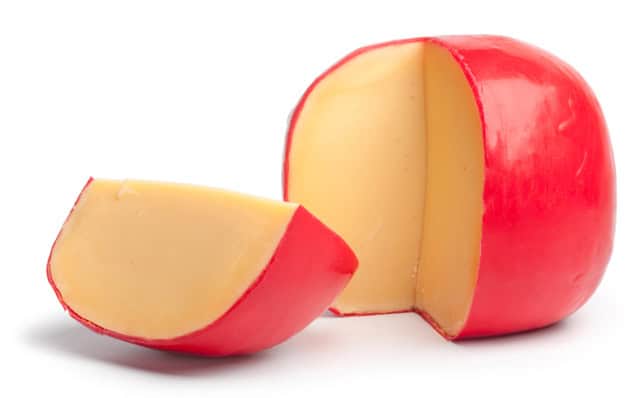
Famous all over the world, Edam is Holland’s second most exported cheese, after Gouda. It is made from skimmed or part-skimmed cow’s milk and is semi-hard. The pressed cheese is usually shaped balls which range from 1-4 pounds in weight. People generally consume Edam whilst is is still young in age. The color is pale yellow with a smooth texture and sweet, nutty flavor. You can enjoy this cheese in many ways such as with a tall glass of Pinot Noir or a pint of dark beer.
Leyden
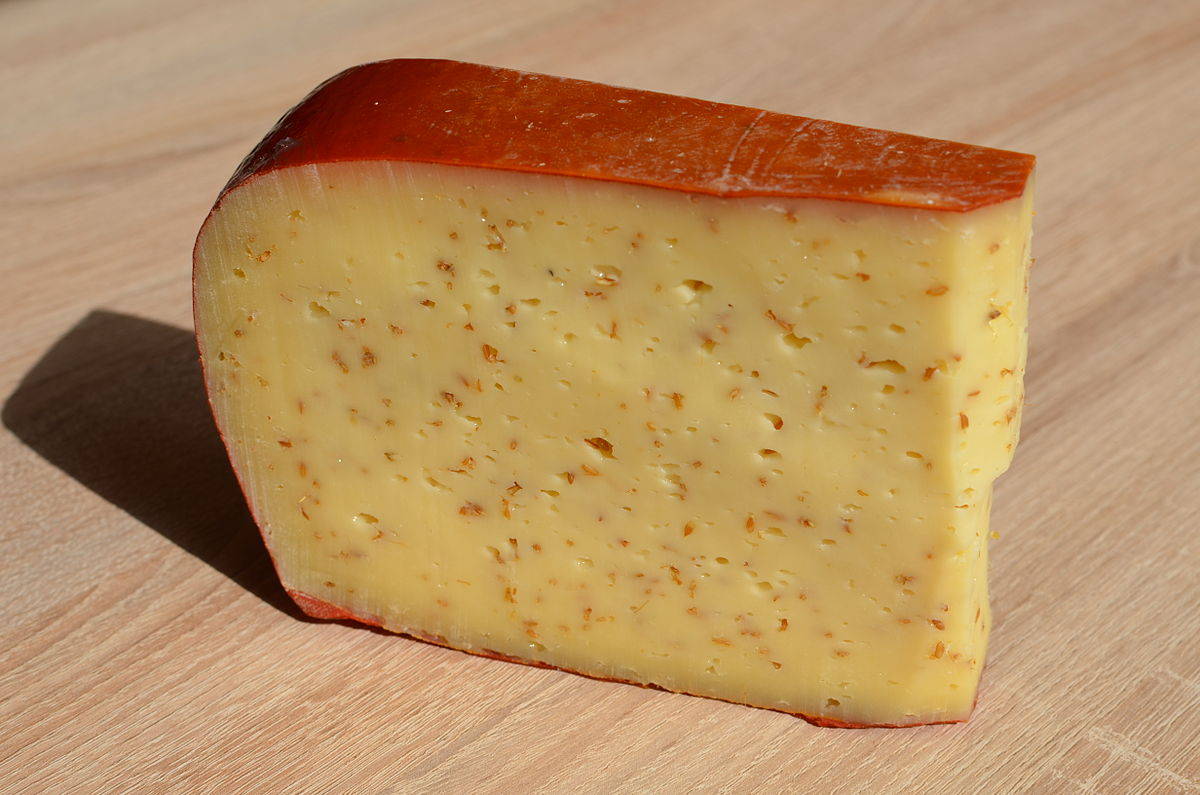
Leyden is a traditional farmhouse cheese which is a big favorite of the Dutch. It is made from a partial blend of skimmed cow’s milk and buttermilk. Cumin seeds or caraway are mixed in with the curds before they are pressed so that the aroma gives off a spicy note along with a creamy, nutty flavor. It can be quite similar to Gouda, but it is a lot drier and is shaped differently. The rind is also painted with red plastic or annatto. You can enjoy Leyden with a nice glass of dark beer and bread on the side.
Gouda

This is definitely Holland’s most famous cheese and it is also its biggest export, contributing to more than half of the country’s cheese production. Gouda gets its name from the Dutch town which is outside of Rotterdam and the flavor is very similar to Edam, with the exception that it is made from whole or part-skimmed cow’s milk. The creamier texture and yellow interior are due to the higher fat content. You can either eat Gouda fresh or aged. The vary in flavor is that when it is young, the flavor is sweet and fruity. When it is aged, it is more complex and cheddar-like. If you mature it for over 18 months, the cheese is coated in black wax while younger variations are covered in rinds of yellow wax. Gouda can be a delicious table cheese or a great addition to a wine pairing.
Smoked Gouda
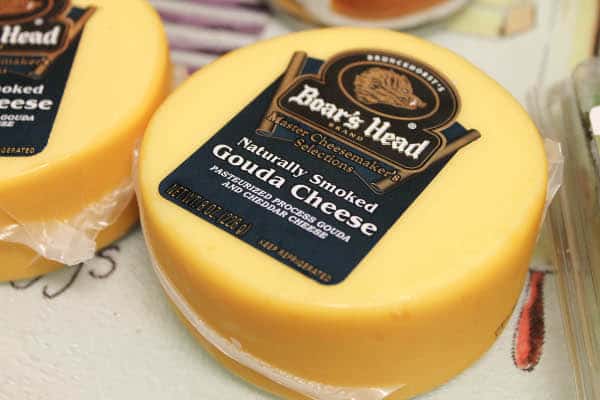
Even though this cheese is produced in some of Holland’s modernized dairy plants, the savory kind is still smoked using ancient brick ovens which are filled with smoldering hickory chips. A lot of cheese lovers will attest that the brick ovens make the smoky, brown rind the cheese’s best part. The cheese as a whole is creamy yellow colored and can be flavored with garlic or herbs. Smoked Gouda would definitely be an amazing addition to a cheese board.
Dutch Mimolette (Commissiekaas)

This creamy, hard cheese made from cow’s milk is bright orange with rough gritty skin. It might as well be an aged Edam colored with carrot juice. This cheese takes around 6-12 months to ripen and when young the texture is firm and oily. When it is aged, however, its colors turns into a deeper orange and the cheese texture becomes harder. Its aroma is fruity with a nutty flavor.
Enjoying Cheese For Breakfast
Breakfast really is the most important meal of the day, especially when you’re a cheese lover and starting your day off right by eating it for breakfast! There’s nothing better than waking up for a long day at work or school with a delicious plate of cheddar or Parmesan molded into our favorite breakfast dishes.
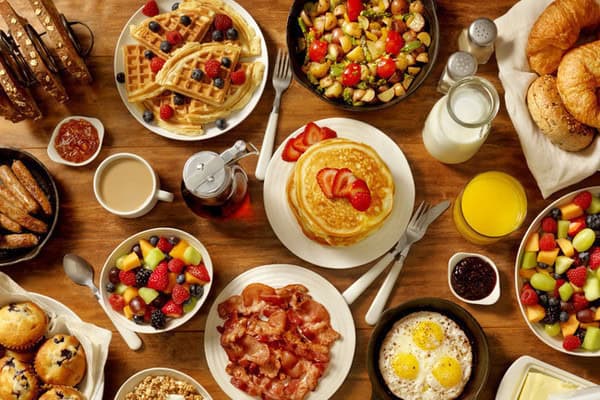
Not only is cheese delicious, but it is a good source of protein which is essential to start the day off right with, especially for growing children and adolescents. It is known that a lot of studies show that eating breakfast improves concentration, memory, problem-solving and your mood (for those who struggle to wake up!) So, that might solve your morning blues, some toasted bread with melted Gruyère to see you through to lunch.
Here are some quick and easy ways to incorporate cheese into your breakfast:
Toast And Bagels

Chicken And Brie Bagels
Divide the bagels and layer one half with the chicken and a slice of Brie. Then add a spoonful of cranberry sauce and place the two halves together again. Cook the bagels for 10 minutes at 350 degrees F.
Banana And Cheese Bagels
This one is relatively simple, it involves toasting the bagels and topping with a spoonful of cream cheese, banana and a sprinkle of cinnamon.
Stilton and Apricots On Toast
Begin by lightly toasting a bread of your choice and spreading one side with butter. Then place a slice of Stilton and canned apricot halves on top of the toasted bread and sprinkle it with a bit of sugar and grill it until the cheese melts.
Other Cheese Toppings On Toast
There are so many variations and options you could go with for this breakfast idea, here are some more unique combinations you could try on toast:
– Cherries, Pecans, Brie and sugar
– Blue cheese and fig spread
– Sharp Cheddar with a marmalade spread
– Parmesan and butter (yum!)
Eggs
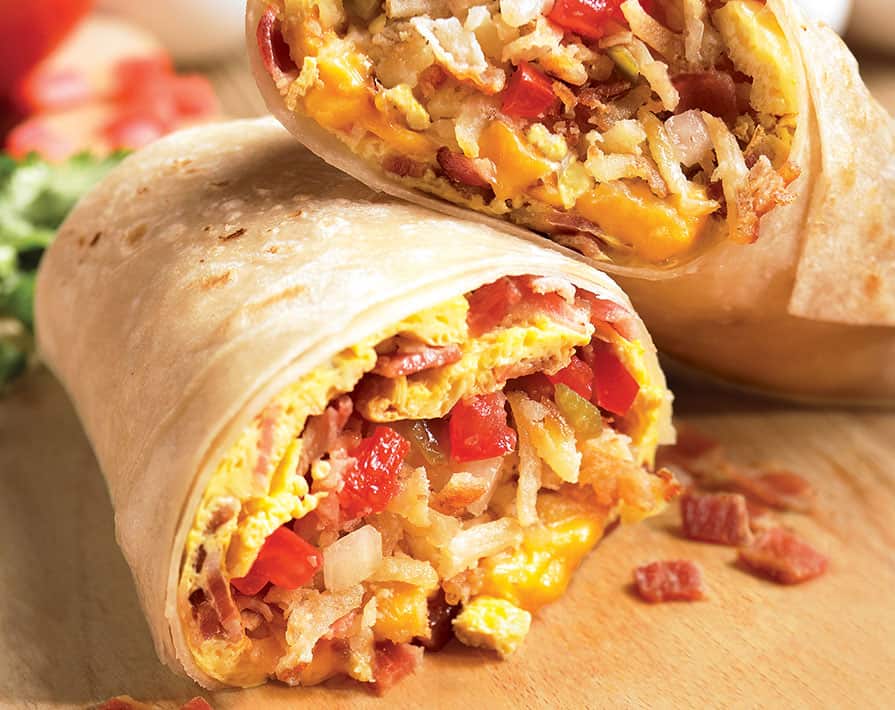
Breakfast Burrito
Breakfast burritos are a classic in America, originating from Hispanic cuisine. Place scrambled eggs on top of a flour tortilla with a bit of salsa and grated Cheddar.
Greek Omelet
Greek cuisine is very big on cheese so a Greek omelet is perfect for this breakfast guide. Chopping up a mixture of spinach leaves, garlic, red onions, and tomatoes for them to be sautéd in a skillet over medium heat until tender. You then beat the eggs with just a drop of water and pour it over the spinach mixture. The eggs will then begin to set, so use a spatula to lift the omelet and let the uncooked portion flow to be cooked. Then, once the omelet is close to being set, crumble some Feta cheese and then cook until it is set.
Southern Style Breakfast Pizza
This unusual, but a delicious style of breakfast can be achieved by scrambling some eggs with a drop of milk and some diced green onion. You then prepare a pizza crust and place it on a baking sheet and spread it with salsa like you would a regular pizza. Then top it with scrambled eggs, cooked bacon and shredded Mexican Queso or Monterey Jack cheese. Bake at 400 degrees F for 10 minutes and enjoy.
Pita Pocket
This simple breakfast consists of scrambling a few egg whites and shredded Cheddar with chopped onions mushrooms, and peppers. You then stuff the food into toasted halves of pita bread and wrap it in foil so you can go about your travels if you need to.
Dips And Spreads
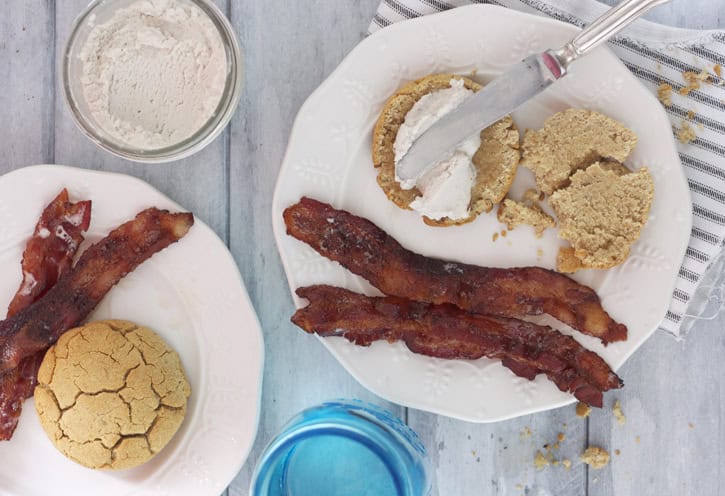
Cinnamon Cheese Spread
In a food processor or a with a blender, blend cream cheese while adding sprinkles of cinnamon, sugar and a handful of raisins or dried fruit of your choice. You can then chill it in the refrigerator and serve on pancakes or toast.
Ricotta Fruit Dip
This delicious dip is a blend of ricotta cheese with sugar, orange zest, and orange juice. You can dip it with your breakfast fruits such as melon and strawberries.
Cream Cheese Dip
Make your mouth water with cream cheese and chocolate spread mixed together to spread on toast and enjoy!
Exploring South African Cheese
South Africa is a newcomer to the cheese industry compared to countries of Europe. In the past 10 years, the craft has significantly developed all over the South African countryside, attracting a bigger cheese-loving audience than ever.

The South African Cheese Trends
Sales of cheese increase about 1.8% each year as popularity grows. On the other hand, in South Africa, the sale of cheese is rising at almost double that, with the rate of 3% per annum. The reason for this is the changing lifestyles of the country.
Rather than dining in, a lot more consumers are dining outside of the home and enjoying cheeses as an ingredient in a number of dishes- an estimated 1,000 metric tons of South African Mozzarella is used on pizza in a month alone! With popular television food shows and cookbooks becoming more trendy, these only add to the reason why cheese is becoming a bigger part of the South African diet.
The Production Of South African Cheese
With the consumption of cheese in France being at 25kg per year and 9kg per year for Australia, New Zealand, and England, it is clear that South Africa only seems at the early stages of cheese production, being at only 1.9kg a year. However, this doesn’t mean to say that there isn’t a huge opportunity for growth.
Twelve big, modern cheese factories in South Africa currently produce about 65% of the country’s cheese. The rest of production takes place in small to medium shops. A lot of the cheese makers are located near the coastal areas where water is readily available and the weather is a lot better for production. More than half of the countries cheese is produced in the Western Cape, also known as the South African cheese province.
Varieties Of South African Cheese
Generally, South Africans have preferred the milder cheeses. The statistics show that of the 82,000 metric tons of cheese South Africa produces per year, 31% is Cheddar, and 20% is Gouda. Because of their versatility, cream cheese,, feta and mozzarella are also favored.
However, over the past 10 years of the cheese market growing and developing, new cheese making methods have introduced South African consumers to more flavorful cheese, French and artisan types in particular. As their palets adjust more to these new flavor profiles, the demand for specialty cheeses continues to rise.
South African cheese markets only carried a few fast selling cheese varieties in the past. However, today markets and delis are stocked with many varieties of blue-veined, brine-ripened, and specialty goat’s and sheep’s milk cheeses, similar to those made in France, Switzerland and Denmark.
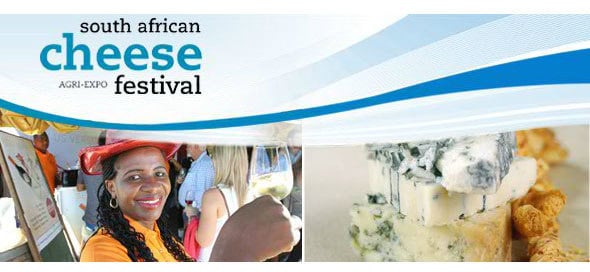
To further the growing popularity, the first annual South African Cheese Festival was held in 2002, but today it is hailed of the countries premier food event where cheese makers get to introduce the new and exciting cheese types they have been developing. Some of the new South African varieties include Kwaito, Wookie, and Bokmakiri, which is a soft goat’s cheese covered with garlic and pepper.
The Cheese Exports Of South Africa
The uniqueness and quality of South African cheese have improved drastically that many cheese lovers think that the country needs to develop its own program for registering the designation of origin cheeses. The labeling would show genuine quality, tradition and local production of South African cheeses.
This might happen when South Africa becomes a true cheese exporting country. Currently, a limited number of South African cheese manufacturers have exported their cheese to the European Union under the EU/SA Free Trade Agreement. We will all just have to eagerly wait to enjoy the delicious cheese that South Africa has to offer, as they strive to overcome exporting hurdles.
Cheeses Of Australia And New Zealand
With many European influences, the world down under is home to a huge array of delicious cheeses. The first cheese making in Australia and New Zealand began in around the 1700s when the first European settlers arrived. The variants they began to create in the beginning were Cheddar, English Cheshire and Leicester, the rest are favorites Aussie originals.

A new demand for continental-style cheeses flooded the nation when Italian and Greek migrants arrived. In today’s day, with Australia being rich in immigrants from all over the world, cheese makers locally produce cheeses from all corners of the world. The market is bursting with top-quality variations of Italian, Greek, English, and French cheese.
Although a lot of the cheeses are replicas of European classics with slight differences in flavor and texture, the amazing landscape of Australia and New Zealand seems to create cheeses with deliciousness in their own right. There are approximately 105 variations of cheese made down under and it’s definitely worth it to try discovering a whole different world of cheeses.
Here are some of the classics of Australia and New Zealand that will have you tempted:
Australia
Woodside Cabecou
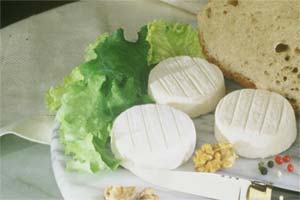
Woodside Cabecou hails from the Adelaide region. The white, soft goat’s milk variety was originally created by Paula Jenkins. Its texture is almost mousse-like and very acidic, when young. With age, the cheese gets harder, giving off a more ‘mushroom’ aroma and flavor. It is distinguished by a thin, natural crust with a wrinkled, yellow color.
Gippsland Blue

Gippsland is one of the first farmhouse cheeses that was made in Australia. It is sweet and buttery with a naturally orange crust dusted with grey-blue molds. The cheese makers, Tarago River Cheese Company, uses the milk of Jersey cows which creates a smooth, creamy texture and gives it a deep yellow color. The cheese ripens in about 8 to 10 weeks and forms into rounds. It is incredibly delicious on its own but can also be added to dishes and grilled.
Pyengana Cheddar

This cheese is a type of modern cheddar made from cow’s milk, but it is not as hard or as smooth as traditional cheddar. It ripens for over a year and because of this, the truckle-shaped cheese has a granular texture and has a rich and nutty flavor. People often use this cheese for grating and grilling, while it also makes a perfect table cheese.
King River Gold
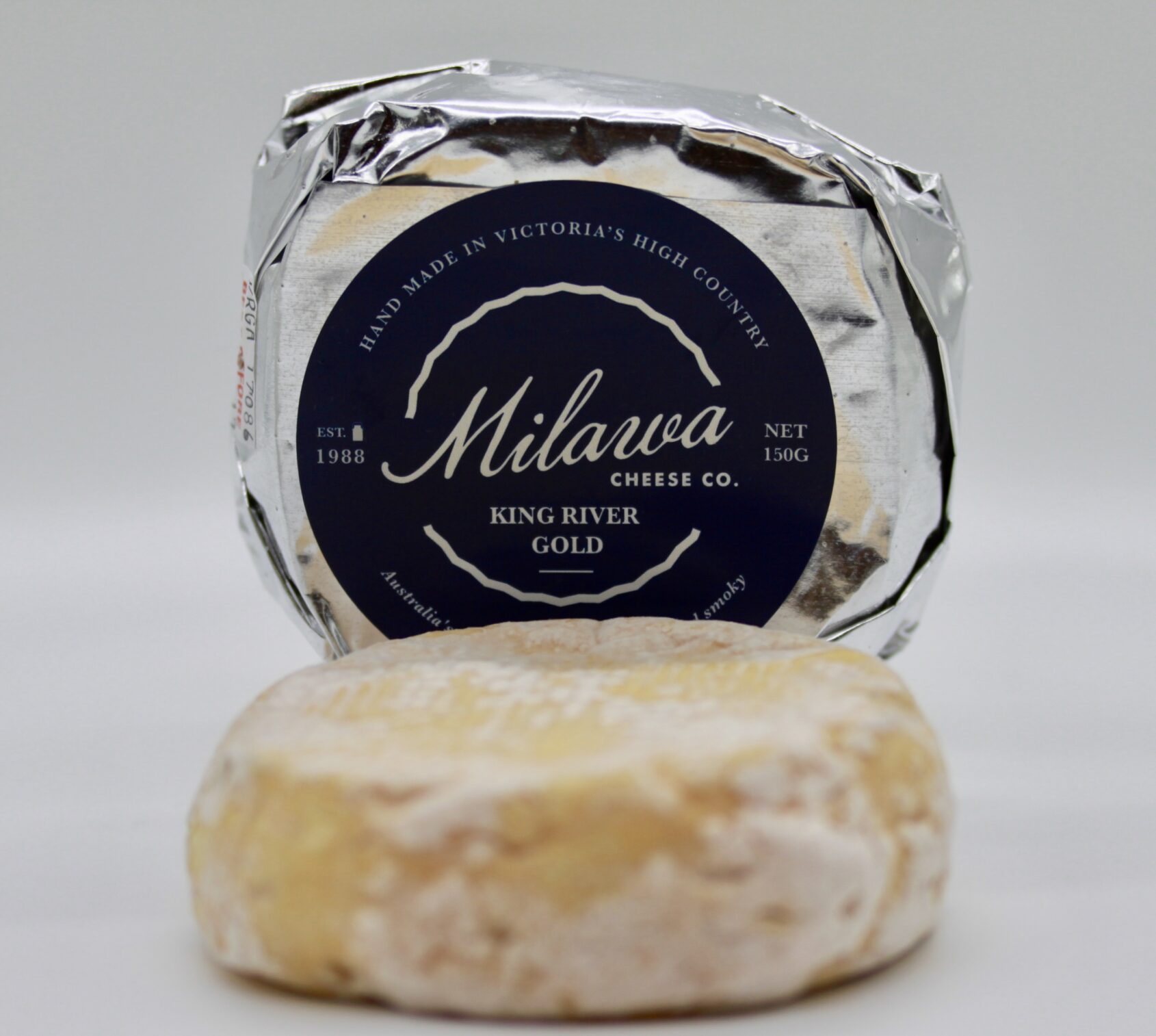
Being produced on the Milawa farm of David and Anne Brown, King River Gold is famous throughout Australia. This semi-soft cow’s milk cheese boasts a sharp taste and an orange-pink natural washed rind which is dusted with mold. It is the perfect table cheese but is also is just as delicious melted over vegetables.
Pokolbin
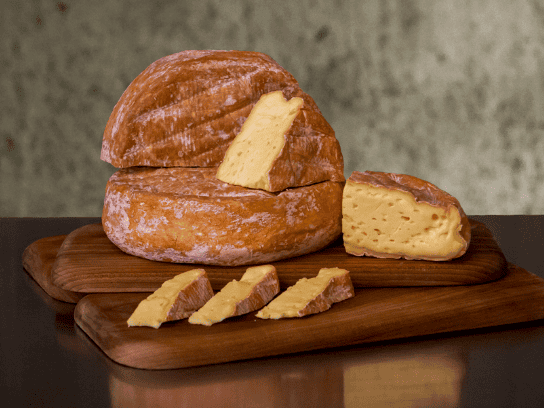
Another popular cheese created down under is this semi-soft cow’s milk cheese which is sharp and spicy in flavor. The shape is very distinguishable as it is a square shape with slightly wrinkled, sticky rind. The Hunter Valley Cheese Company produces the Pokolbin and it serves as an unusual but interesting cheese board selection that is also great for grilling.
Kervella Affine
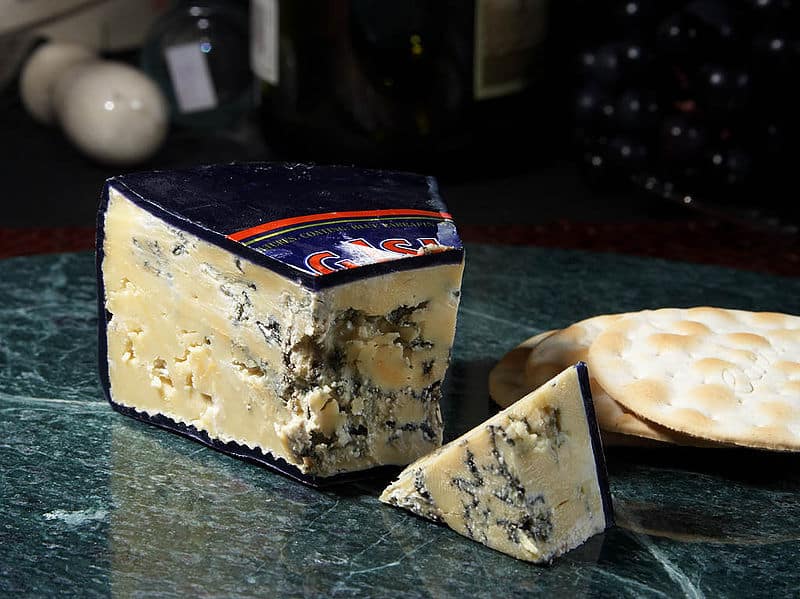
The name of this cheese originates from the small Australian farm owner mastered her cheese making skills in France- Gabrielle Kervella. This soft, white cheese is made from organic goat’s milk and is formed into logs or rounds. It is enjoyed in many different stages of maturity, at two weeks, Kervella Affine is sweet and mild. When it is matured more than that, it becomes flaky and hard while the taste is similar to macadamia nuts, with salty notes.
New Zealand
Windsor Blue

The most award-winning cheese title goes to Windsor Blue. It is usually made in South Island’s limestone area and is named after the township of Windsor. It is pasteurized cheese which has a combination of premium cow’s milk and unique blue cultures. Not only that but it is rich and loaded with a full-body flavor. This is a must try favorite of New Zealand.
Airedale

Airedale is also the name of a district in New Zealand, which is where this cheese got its name from. This modern farmhouse cheese has a thin, natural crust which is coated with a special red cheese paint. Within this coating, the cow’s milk cheese has a compact, semi-soft to semi-hard texture with bright yellow coloring. It has a rich depth of flavor, which varies in age- fruity when young and more full-bodied and savory with age. It is also suitable for vegetarians.
Whitestone Farmhouse
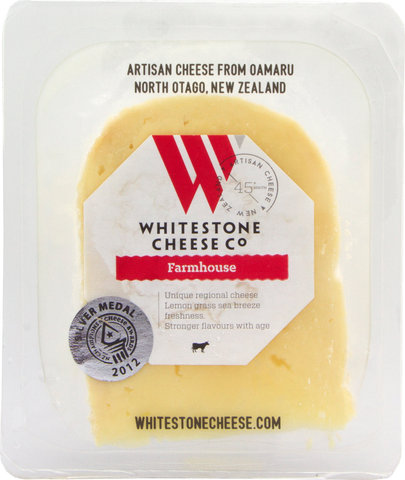
From the ancient white rock limestone found in the New Zealand South Island, is where Whitestone cheese takes its name and is produced. Carrying fragrance of lemongrass, this unique cow’s milk variety has a fine Penicillium candidum rind. It is crumbly and moist in the center and softer towards the outside. With a fresh and fruity tang, it gives off notes of pineapple and guava. It also gains more character with age, displaying a nutty side.
Keep That Parmesan Rind!
One of Italy’s greatest contributions to food has got to be Parmesan. With its origins in the region of Emilia-Romagna, it is celebrated for its versatility. Ranging from being a garnish when grated over a casserole, or the masterpiece of a cheese board, it’s delicious salty notes can more than hold its own against robust blue cheeses or meats.
Far too often, a big part of the cheese ends up being unwanted and unloved trash. It doesn’t have to be that way though! The skin sometimes referred to as the rind of Parmesan has so much more to contribute to a lot of different dishes, if only you would give it a chance to display its fabulous qualities!
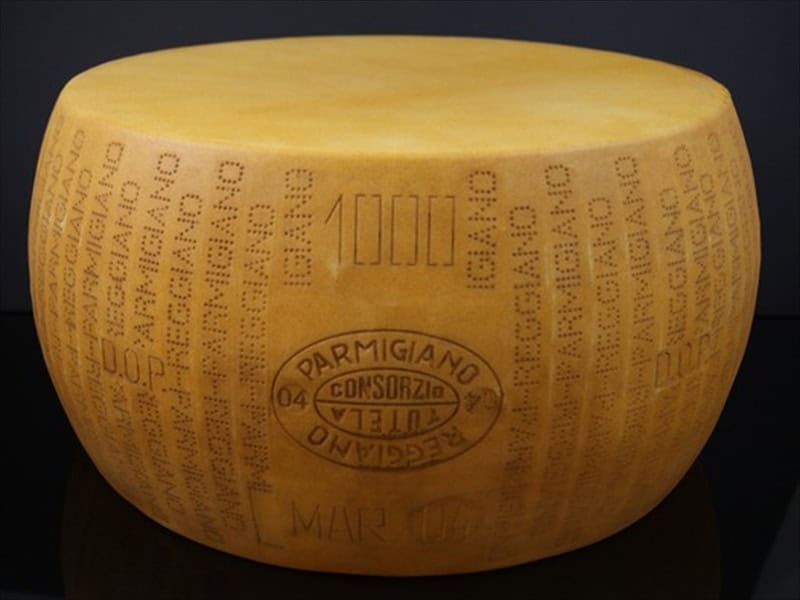
For example, when you’re braising a comforting dish. Along with whatever you add in terms of spices, herbs, and stock, the cooking liquor could definitely use some seasoning to lift the dish to a whole new level. Usually, you’d just reach for the salt and pepper, but it should be known that there is more than enough sodium residing within the skin of Parmesan. It offers a milky, subtle dose of sodium which cannot be achieved by just salt and pepper.
Unique Qualities
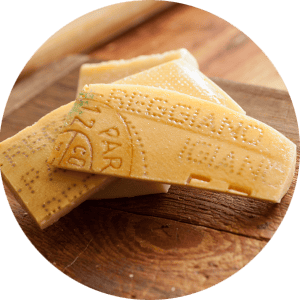
You may be wondering what to do with it, but it is fairly simple. All you have to do is put a piece into the liquid, allow it to soak and release its unique qualities. The heat will aid with soaking and absorb the delicious qualities, and when the braise is done turning into perfection in both texture and taste, you simply have to fish out what remains of the rind.
The same approach can be used when making other dishes, especially those you’re using the parmesan with. It simply acts as a delicious season, to give your dish that extra taste you’ve been searching for.
Not only does the parmesan skin impact dishes in terms of taste, it can also contribute the visual impact simply by placing it in the center of a cheese board. The iconic stenciling of the inscription of the rind ‘Parmigiano Reggiano’ will act as a signpost that quality products are on offer. It can also act as a conversation piece, providing any host the chance to educate their guests on what the stenciled letters mean in terms of Italian cheese, which in turn spreads the message of the quality of the cheese.
Although no matter what, the rind will eventually go in the trash, there will not be guilt attached because you have put the product to full use and it also acts as an excuse to go and purchase another Parmesan! (Who needs an excuse for that though?)
Things To Know About Dairy Free Vegan Cheese : Healthy Diet
The whole term ‘vegan cheese’ sounds like a contradiction in itself. You might be wondering how a vegan can eat something made from milk when they are thoroughly against eating any product that comes from an animal. Well, there are actual non-dairy cheeses on the market, as opposed to cows’ or goats’ cheese. However, choosing non-dairy cheese requires care and attention.
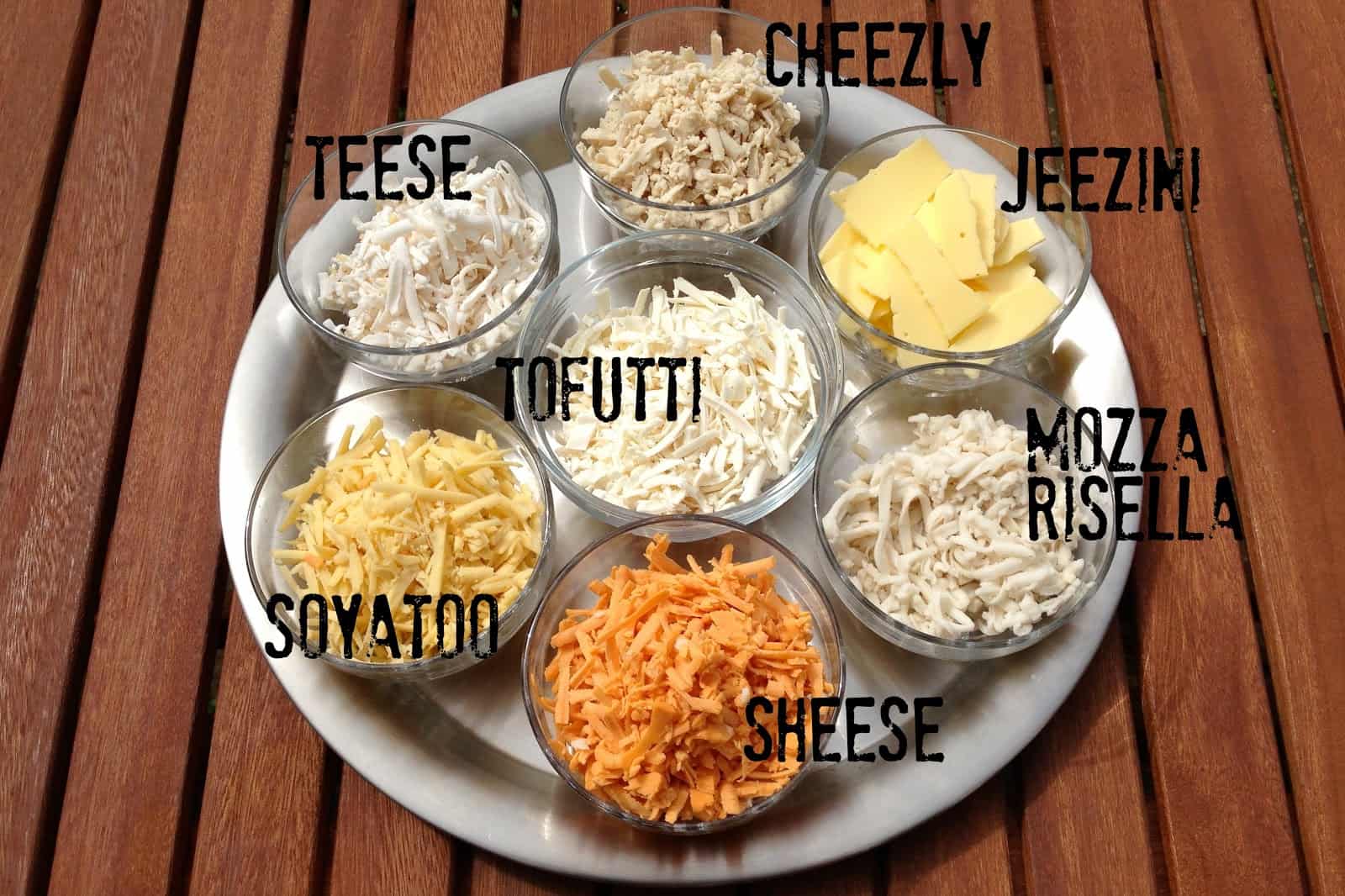
Be Cautious
A lot of dairy cheeses are made using rennet, which is the process of extracting an enzyme from the stomach of a calf. Although vegan and vegetarian cheeses are made without rennet, some cheeses which are suitable for vegetarianism, including some made from soy milk, can still contain casein or calcium caseinate which is milk protein to give texture to cheeses. The best way to be completely sure you are avoiding animal products, read the ingredients thoroughly and look for the logo from the Vegan Society.
A good range of vegan cheeses are available and the choice is forever growing as more and more people decide, for ethical and health reasons, to give up dairy food and opt for a vegetarian or vegan lifestyle. That being said though, vegan cheese can be hard to find in just your small local grocery store. The best places to look are specialist cheese shops or big grocery stores. You should also ask because if the demand is great enough, it will have to be met.
A few helpful names to remember when searching for tasty vegan cheese are Tofutti, Cheezly, and Scheese. All of which can be found in store or ordered online. There are plenty of useful websites and books that will contain all the information on where to get the best, certified vegan cheeses as well.
How To Use Vegan Cheese
Vegan cheese can come in soft or hard form and different styles just like regular dairy cheese. You can grate, slice, spread or use as a pizza topping, the only difference to dairy cheese is that the properties are slightly different. Most vegan cheese can be used to replace dairy cheese in traditional recipes. The best thing to do is try them out yourself and find your favorites and them go ahead and begin incorporating them into meals.
Yeast Flakes
Something very valuable to a vegan’s diet is nutritional yeast flakes. They help provide essential nutrients along with the important cheesy taste to many dishes. The flakes are yellow (not to be confused with brewer’s yeast) and can be sprinkled onto mashed potato, for example, to give the cheesy topping desired for your casserole. These flakes are available from healthy food stores or on the internet.
A Tasty Recipe Example of America’s Beloved Macaroni ‘Cheese’
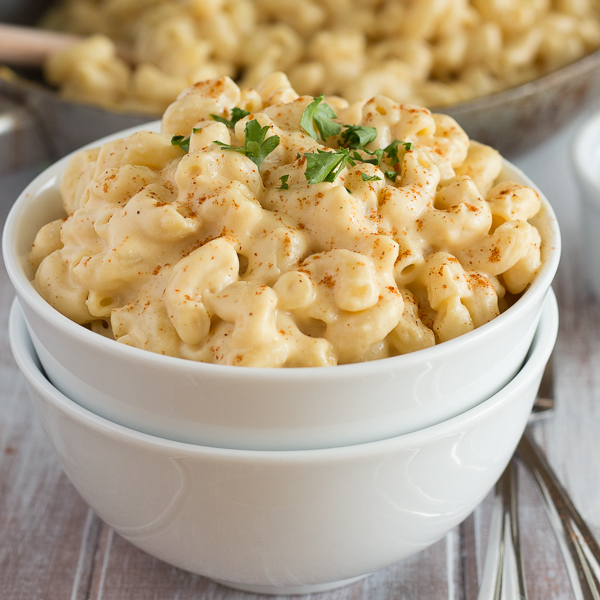
What You Need
3 cups macaroni
½ cup vegan butter
½ cup plain flour
3½ cups boiling water
1½ teaspoons salt
1½ teaspoons garlic powder
Pinch turmeric
2 tablespoons dark soy sauce
¼ cup oil
1 cup nutritional yeast flakes
Paprika
What To Do
Pre-heat the oven to 375 degrees F
Cook macaroni as instructed on the packet, drain and set aside.
Melt the butter, stir in flour and mix over low heat until you have a smooth paste. Mix in garlic powder, turmeric, and soy sauce with the boiling water and gradually add to pan, stirring constantly until you have a smooth liquid. Return to heat and bring to a boil, stirring. Remove from heat and whisk in the oil and yeast flakes.
Place macaroni in ovenproof dish. Stir in most of the sauce. Pour remaining on top and sprinkle with paprika. Cook for 15 minutes.
Serving Cheese As A Dessert
In different traditions, it is customary to serve a cheese course before dessert or after dessert. But sometimes, you can switch out your chocolate cake and cherry pie for a delicious cheese course.
